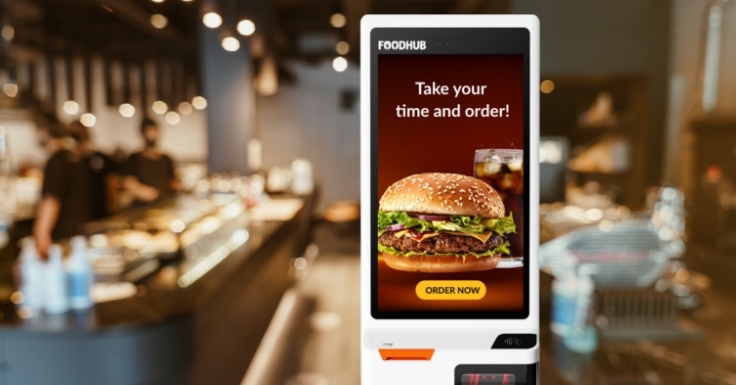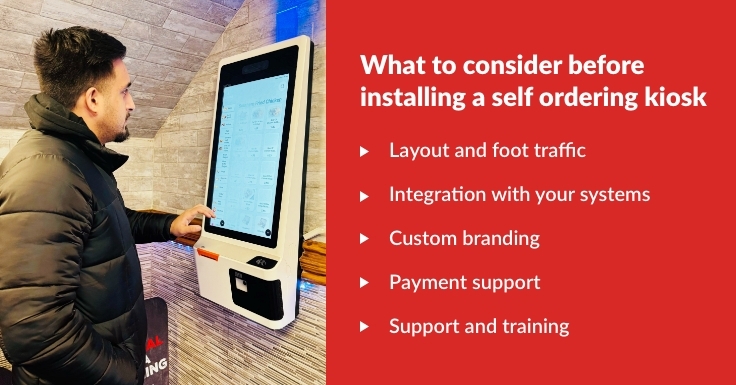The Rise of Self-Service Kiosk Technolgy in Australian Restaurants


Australia’s restaurant industry is evolving rapidly. With rising labour costs, increasing customer expectations, and the need for seamless service, many venues are now turning to technology to bridge the gap.
One of the biggest game-changers? The self-ordering kiosk. Once only seen in fast-food chains, self-service kiosks are now being adopted by independent restaurants, cafes, and even food trucks across the country. And for good reason—they’re efficient, reliable, and provide a better ordering experience for customers.
So how can Australian restaurateurs implement kiosk machines without breaking the bank or compromising their brand? This guide breaks it all down.
A self-ordering kiosk is a digital touchscreen system that allows customers to browse the menu, place orders, customise their items, and make payments—without needing to interact with a staff member.
You’ve likely seen them at McDonald’s or airport food courts. But these systems are now becoming common in small venues across Melbourne, Sydney, Brisbane, and beyond.
They typically consist of:
The demand for self-service kiosks in Australia is driven by a combination of operational needs and consumer behaviour.
Here’s why restaurants are making the switch:
Staff shortages are a growing concern in hospitality. A self-ordering kiosk can take on repetitive front-of-house tasks—like taking orders or handling basic queries—freeing up staff to focus on food prep, table service, or customer engagement.
With multiple ordering kiosks, you can process more customers at once, reducing queue times and avoiding bottlenecks at the till.
Because customers place their own orders, there’s less room for miscommunication. Modifications are handled visually, which reduces human error and wasted food.
Kiosk machines can be programmed to suggest add-ons—like sauces, sides, or drinks—at the right time in the ordering flow. This leads to higher average order values without your staff needing to do a hard sell.
Younger audiences, in particular, enjoy the independence and privacy of ordering via a screen. It allows them to take their time, explore the menu, and feel more in control.

Not all kiosk machines are created equal. Before jumping in, it’s essential to assess your venue, customer flow, and long-term tech goals.
Do you have the physical space to install one or more kiosks? Make sure screens are positioned logically—ideally in the path of entry or near the counter.
Your self-ordering kiosk should connect seamlessly with your POS, kitchen printers, and inventory systems. If it doesn’t, you’ll end up creating more work instead of saving time.
Look for systems that allow you to reflect your restaurant’s look and feel. A custom-designed interface builds trust and ensures brand consistency.
Make sure your kiosks accept a range of payment methods—from cards and mobile wallets to contactless. In some areas, supporting cash may still be useful.
Choose a provider that offers onboarding, staff training, and technical support. Your team needs to feel confident using the system—especially during busy periods.
Kiosks aren’t just for fast food chains. They work well for:
They can also be used in hybrid formats—such as a front-facing ordering kiosk for customers, with staff tablets for in-house ordering or adjustments.
A smart self-ordering kiosk setup doesn’t work in isolation. The best approach is to pair kiosk orders with mobile ordering and EPOS systems that share the same backend. That way, you’re creating a consistent customer experience—whether someone’s ordering at the screen, on their phone, or through your website.
Foodhub’s integrated platform allows Australian restaurants to run kiosk ordering alongside takeaway, delivery, and table service—all connected in real time.
Plenty of global quick-service restaurant (QSR) chains have seen a genuine uplift in revenue—and Australia is no exception. Here are the most relevant insights:
A recent study by Restroworks found that implementing self-service kiosks yields a 10–30% rise in average order value across QSR and fast-casual venues (https://www.restroworks.com/blog/self-ordering-kiosk-restaurant-statistics-2025/)
Red Rooster, a major Australian chicken QSR chain, reported that as many as 35% of in-store orders are now placed through kiosks—leading to smoother counter flow and better staff efficiency. (https://www.kioskmarketplace.com/articles/self-order-kiosk-complements-australia-qsrs-store-of-the-future/).
Abacus reports suggest that kiosks reduce ordering time by nearly 40% versus traditional staff interaction—speeding up service and allowing staff to focus on food quality. (https://abacus.co/blog/how-self-ordering-kiosks-increase-roi-case-study/).
According to a Square “Future of Commerce” survey covering Australia, the UK, US, and Canada, 78% of dining consumers said they would prefer to use a kiosk if available. (https://squareup.com/us/en/press/2024-future-of-commerce-us).
To enjoy the same benefits Australian QSRs are seeing, you need to ensure that your kiosk deployment includes:
If you're exploring self-service kiosks, Foodhub offers:
The data is compelling: self-service kiosks aren’t just a trend—they’re a solid investment with proven returns. From larger orders to faster service and happier customers, the numbers speak for themselves.
Partner with Foodhub to explore affordable, integrated kiosk solutions built with Australian venues in mind.